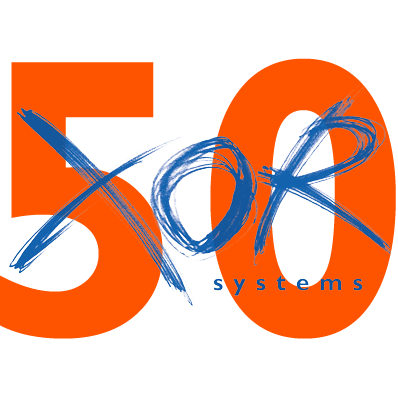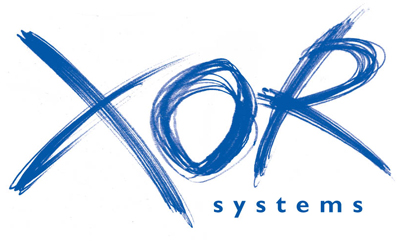25 More Years at Xor Systems 07-07-2023

We have just celebrated the 25th anniversary of Xor Systems. In the two articles that we have published for the milestone, we discussed the changes that have happened in the technology sector since our founding in 1998, and the significant developments in the year 1998 itself. In this article, we will be looking to the future and discussing what we believe the future has in store for the world of technology.
Celebrations tend to look back and nostalgia is a wonderful feeling. To some extent, it is uninteresting looking backwards, it is far more interesting to look forward and guess at what future technology might look like. Reviewing the last 25 years shows the enormous leaps made by technology. What will the next 25 years bring?
AI
No doubt AI will have a significant impact on the future of technology. This technology is only just coming to a point where it has real-world uses for users with the advent of tools like ChatGPT and AI art tools such as MidJourney. However these tools are bound to become more capable as time goes on and thus make a deeper impact on our daily lives. There are a number of issues that will need to be resolved as AI becomes increasingly more powerful and more embedded in our lives. Concerns have been raised about safety for human life, and about the ethics employed by an AI. Presumably in 25 years time, we will have resolved these questions. There is the classic dilemma when creating autonomous vehicles. Does the AI within the vehicle protect the life of the human within the vehicle to the detriment of all those outside? Does the AI balance the worth of the humans involved, for example, by saving the life of a juvenile in preference to an old man?
Further questions have been raised about tools like ChatGPT, in education. ChatGPT provides concise answers to any question. We have all become used to Google - anything can be asked as a question on Google, but Google doesn't really give an answer - it merely lists pages that could provide answers. We have to judge for ourselves which answer is correct or suits our requirements. ChatGPT is different, it is a conversational tool which we can use to refine the answers it returns, in a conversational way. Effectively, ChatGPT is making the judgement for us and provides a complete answer. This is tricky for education. Students don't need to exercise their judgement, filter results of research and then present their findings. ChatPT will provide a complete answer. How does this affect education, when students merely pass their coursework to ChatGPT and submit the response? In addition, the teacher will generate coursework and reports using ChatGPT!
6G
Communication standards are an ever-evolving field of technology, as the years go past small improvements will be made and new technologies discovered that can benefit our communication. However, the best technology ever created for communication is standardisation, so every few years governments, regulatory agencies and businesses will work together to package all of the matured technologies for communication into a new generation standard for wireless communication. At the present moment, we are in the process of implementing the fifth generation of wireless communication standards but within the next 25 years, we could start to see the implementation of 6G or the sixth generation of wireless communication standards. Design work is already underway - in 25 years this will be complete.
Boots on Mars
In the last 10 years, the commercial space sector has emerged and developed to the point that companies are out-competing the governments that were once the only entities who could afford to develop space technology.
This uptick in commercial space activity has drastically reduced the price to get materials into the orbit of Earth and will likely see organisations like NASA refocus from developing launch vehicles and systems for low earth orbit operations to systems intended for uses on the Moon, Mars and beyond.
All of this new commercial activity will likely see within the next 25 years the first humans to set foot on the surface of Mars.
Satellite Communication
Another consequence of the lowering prices of launch to low earth orbit talked about in the previous topic has been the uptick in the launch of small satellites aiming to serve the IoT market. Companies such as StarLink are offering Internet connectivity and, in the future, a global mobile phone service. Apple iPhone already offers connection via satellite for emergencies; this should broaden out in the next decades. The introduction of more and more connectivity enabled by satellites will hopefully see every member of human space connected to the internet, should they desire to be, in the next 25 years.
Nuclear power & small modular reactors
Nuclear power has long been thought of as our key to a green future. However, in recent times its lustre has been somewhat diminished by the long build times and high price tags associated with nuclear projects. A significant development, in the next 25 years, will be the introduction of a new class of reactors that aim to address the issues of high cost and long project time. This new class of reactor is the small modular reactor or SMR. The main selling point of SMRs is that they are smaller reactors that can be built in subassemblies in a factory and then assembled on-site whereas a typical reactor is almost entirely manufactured on-site. SMR are based on the technology used in nuclear submarines, so has a proven record.
And of course, nuclear fusion is only 10 years away, so may well actually be available in 25 years time. or may still be 10 years away.
Computing
It's hard to predict where computer technology will develop over the next 25 years. The smartphone was introduced within the last 25 years, so it is entirely possible that a whole new range of products could be developed. Smartphones provide us with always-on pocket sized computers, that are enormously flexible. Consider ::
a computer that senses movement, vibration and orientation, knows its location,
can see and hear, controlled through touch,
with full-colour screen and excellent sound,
superb camera and software,
can talk to you,
can store data and access the Internet for more information. What comes next?
Different screens? Wearable phones? Smaller, larger? Holographic displays? Other than the size of the display, there is no reason for the distinction between desktop computers and mobile phones. By separating the display from the computer, we can use the same computer for both mobile and desktop use. Display technology needs to advance, to provide a scalable means of viewing the output of the computer.
Faster and more powerful is a given; better battery life is a given. Advancement must come from user entry and user display, better means of interacting with the computer. With the advances in AI and the advances in voice recognition, then speech input is obvious.
Synthetic biology
Synthetic biology is a multidisciplinary field of science that focuses on living systems and organisms, and it applies engineering principles to develop new biological parts, devices, and systems or to redesign existing systems found in nature. These technologies are just starting to see development now with the advent of easier tools for working with genetics such as CRISPR. Synthetic biologists aim to have an impact in fields such as drug manufacture, biofuel production, tackling pollution, and in medical diagnostics.In the next 25 years, we are likely to see significant advances in this field that lead to advances in medicine and industry, producing customised biological processes.
Sources of energy
As we aim to curb our usage of fossil fuels, we are pursuing technologies that enable us to be greener in our daily lives. One such technology is the heat pump. Everyone in the UK owns one already but this one purpose is not to heat our homes but to cool our food. The same technology that has serves us by keeping our food fresh is being employed to move heat from the outside environment, to heat our homes.
Another source of energy that promises much is geothermal energy. Drill deep enough and you strike pockets of heat; pump water down below the ground and it returns superheated. We already have a network of power stations, ready connected to the National Grid. Replace the boilers with heat exchangers and we can use the same steam turbines to generate electricity.
Robots and automation
Humanity has often pictured the future including ubiquitous domestic robots making our everyday life easier from driving our cars to folding our clothes, and while robotic vacuum cleaners and lawnmowers already exist and self-driving cars seem close on the horizon, the dream of a humanoid robot that is capable of performing generic human tasks still seems out of reach. We think this may be an area that won't see widespread solution come to market in the next 25 years but there is still exciting innovation in the field such as the Boston Dynamics range of robots. Some of these are being used in industry for relatively narrow applications such as the Spot robotic dog being used for inspections of potentially hazardous areas.
One area of robotics likely to see significant development is that of "soft" robots, robots designed to work alongside humans, using soft materials, moving away from the rigid materials used in traditional robots, few of which can operate in natural environments or in close proximity to humans. In addition to safety concerns, these robots are simply not very good at adapting to different circumstances and they are not well-matched to the materials they encounter. By building robots from soft materials, and designing them to work alongside humans, ranging from being merely flexible to being extraordinarily ‘squishy’ and capable of dramatically changing their size and shape, we can build robots suitable to work in areas such as care, caring for the elderly and nursing the sick.
